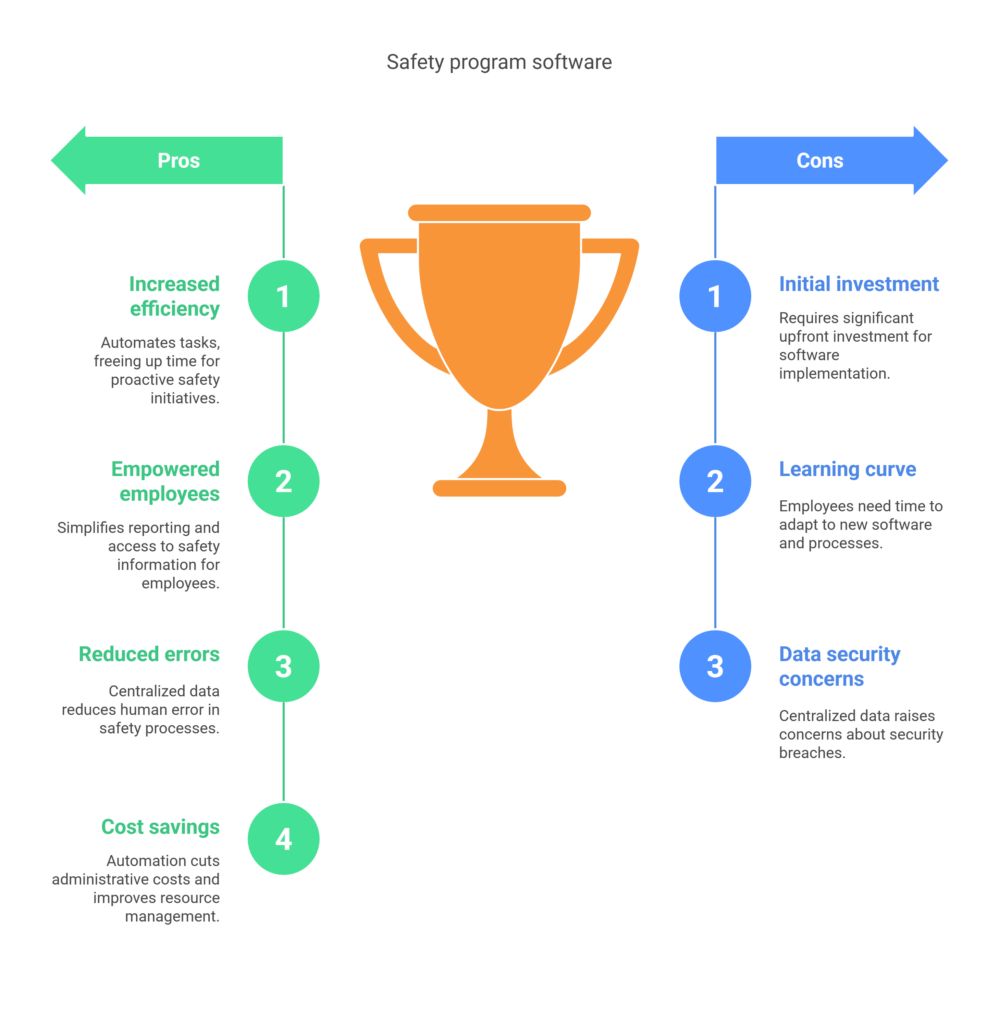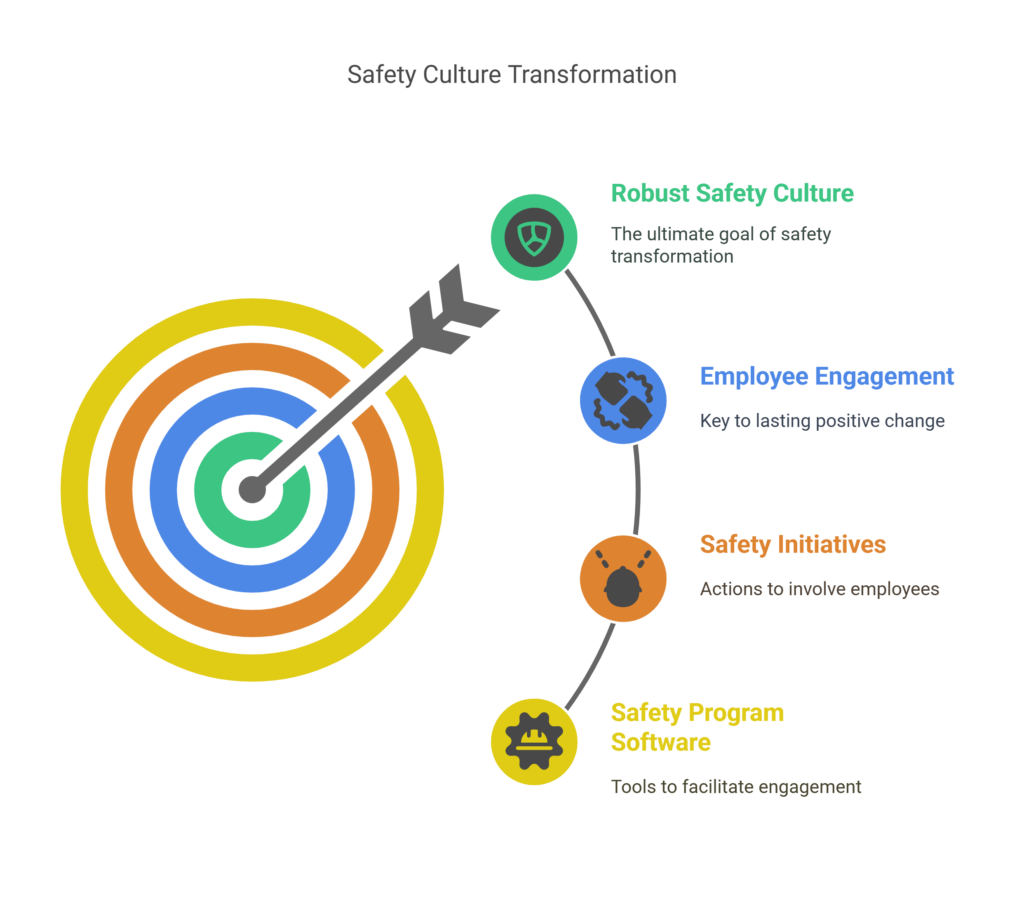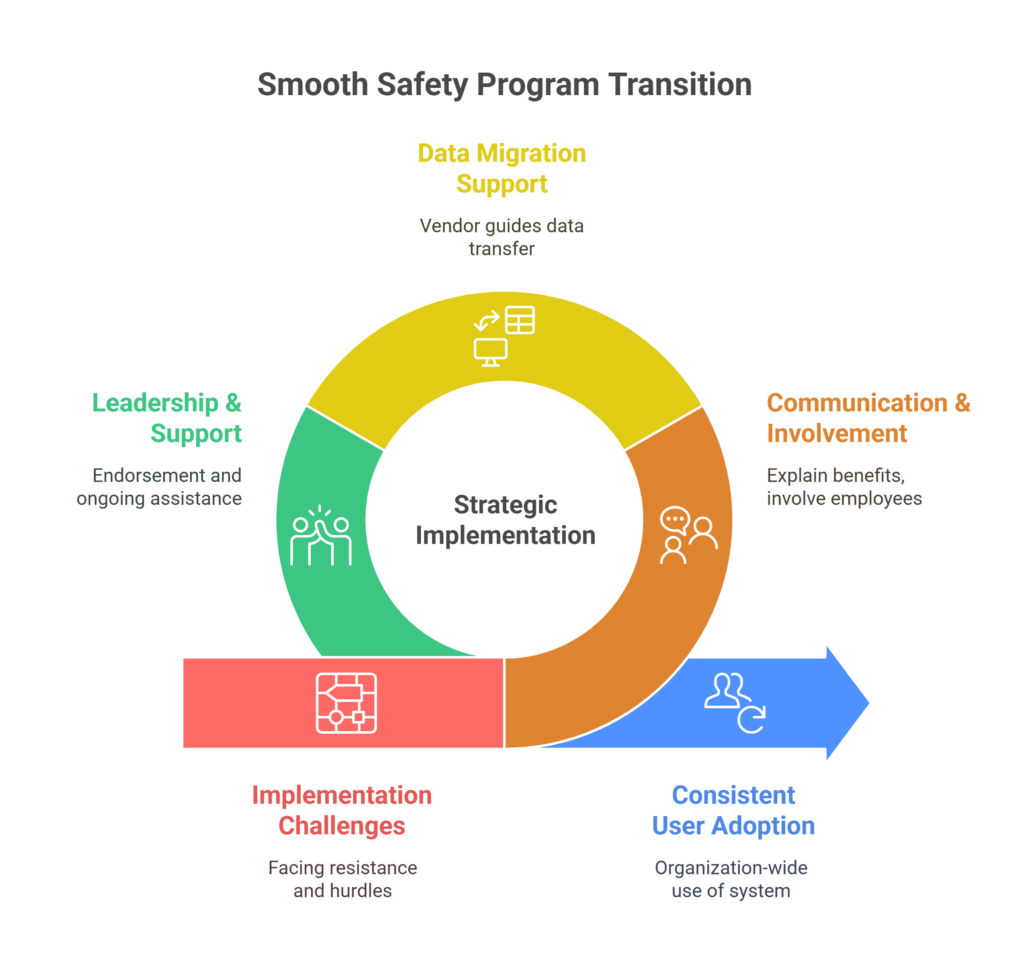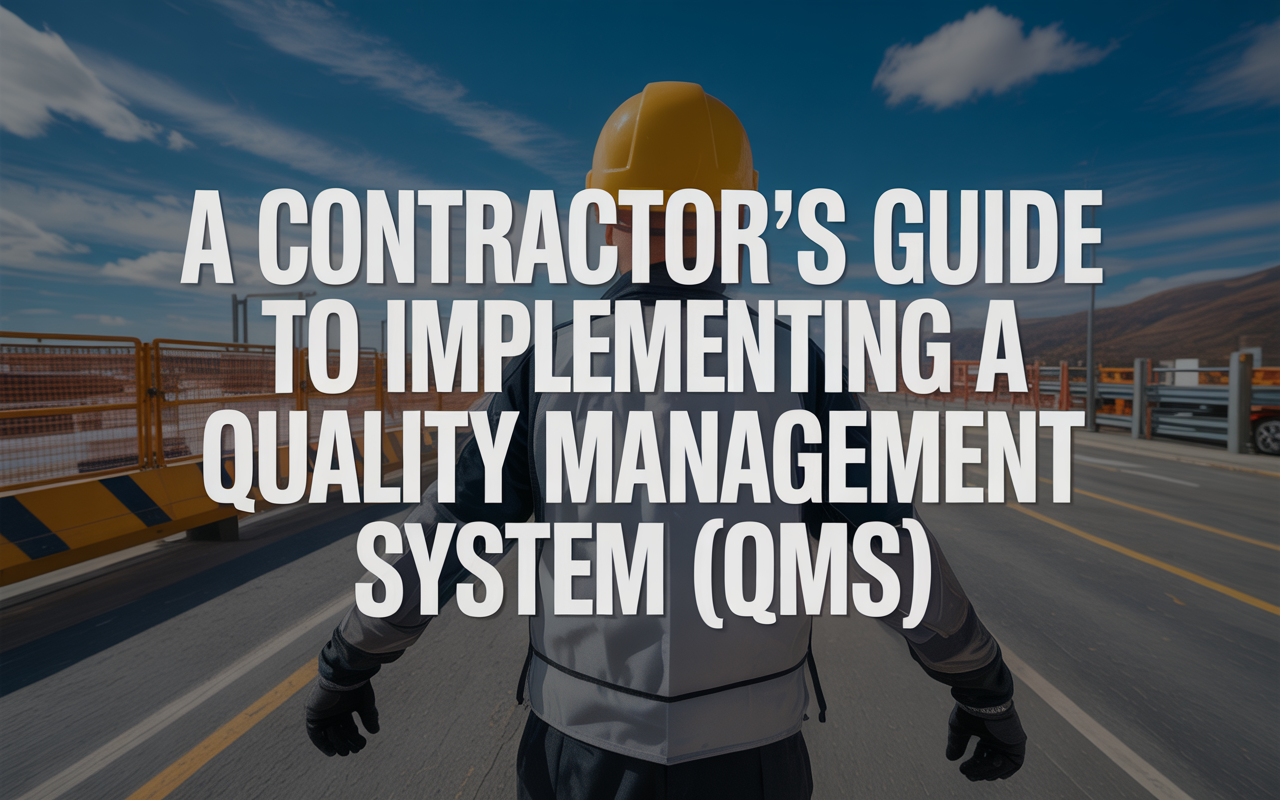Introduction
Missed inspections, laborious paperwork, and slow incident response can all cost a business more than just money—they put your people and operations at risk. 😓 Many safety leaders battle redundant manual processes and struggle to keep everyone informed. But imagine transforming safety oversight into a proactive, data-driven process where compliance, accountability, and engagement are streamlined through one platform.
This piece dissects what effective safety program software actually delivers, busts the myth that digital tools are just for compliance, and shows how modern platforms like those from Nektar do more than tick boxes—they empower entire safety cultures. Here’s the core truth: digital safety tools make your organization nimbler, foster collaboration, and boost employee engagement. You’ll walk away knowing why safety software is more than a trend, what features matter, and how to select a platform that actually drives results.
- Why digital safety management outpaces spreadsheets and paper forms.
- How leading features—real-time monitoring, data-driven insights, and centralization—solve real business pain points.
- The direct link between software-enabled safety programs and your organization’s bottom line.
What Is Safety Program Software?
So, what exactly *is* safety program software? Think of it as your digital command center for all things safety. It’s a specialized platform designed to centralize and streamline a company’s safety protocols, training records, inspection schedules, incident reports, and all those critical compliance requirements. Whether you’re a small business or a large enterprise, this software helps tackle the core challenges of maintaining a safe and compliant workplace, moving you away from scattered files and potential oversights.
It marks a big step up from the old days of overflowing filing cabinets and handwritten forms. 📜➡️💻 The shift to software-driven safety management brings about a new level of transparency and efficiency. Information becomes readily accessible, updates are instantaneous, and the entire safety apparatus becomes more responsive and manageable. It’s about making safety less of a chore and more of an integrated, proactive part of operations.
Core Features Organizations Should Expect
When you’re looking at safety program software, certain features are non-negotiable for a truly effective system. You’ll want robust incident tracking that captures all necessary details, comprehensive compliance management tools to keep up with regulations, and task automation to take repetitive duties off your team’s plate. Document control is also vital for keeping policies and procedures current and accessible, alongside powerful analytics to turn safety data into actionable insights. 📊
Beyond these basics, real-time monitoring and customizable dashboards are game-changers. These allow safety managers to have a constant pulse on safety performance, spot emerging trends, and identify potential hazards before they escalate. As Hubble Build notes,
“The real-time monitoring and reporting capabilities offered by workplace safety software provides organisations with a dynamic and responsive approach to safety management.”-Hubble Build
This means you’re not just reacting to incidents; you’re actively preventing them.
Together, these features create a powerful synergy. They help your organization respond faster to hazards, maintain impeccable records for audits and reviews, and cultivate a strong culture of accountability where everyone knows their role in maintaining a safe environment. It’s about building a system where safety is seen and felt.
Advantages of Implementing Safety Program Software
Bringing safety program software into your organization isn’t just about new tech; it’s about unlocking some serious advantages. One of the most immediate benefits is a big jump in efficiency and productivity. 🚀 When routine safety tasks are automated and information is centralized, your team spends less time on paperwork and more time on proactive safety initiatives. This also empowers employees by giving them easier ways to report concerns and access safety information.

Think about the impact of centralizing all your safety data and automating those often tedious manual tasks. This significantly cuts down on the chances of human error, reduces the administrative burden on your safety team, and, quite frankly, can trim operating costs. It’s not just about being safer; it’s about being smarter with your resources. Hubble Build highlights this, stating,
“Implementing workplace safety software can yield significant cost savings and a positive return on investment (ROI) for organisations in the long run.” -Hubble Build
Another fantastic upside is the boost in employee engagement. When staff can easily report hazards digitally, see their contributions acknowledged, and access training materials readily, they feel more connected to the company’s safety goals. Noggin points out,
“Safety management software encourages employee participation and involvement in safety initiatives … providing a platform for employees to report hazards, incidents, and near-misses, which serves to foster a culture of safety ownership.” -Noggin
This creates a positive feedback loop, strengthening your overall safety culture.
Common Use Cases Across Industries
Safety program software isn’t a one-size-fits-all solution, but its adaptability makes it valuable across a wide array of industries. You’ll find it actively used in sectors like construction, where site safety is paramount; manufacturing, with its complex machinery and processes; energy, dealing with high-risk environments; and logistics, managing fleet and warehouse safety. Each industry has its unique challenges, and the software can be configured to meet those specific needs. 🏗️🏭⚡🚚
For instance, in construction, the software can automate pre-start checks and site safety inspections, ensuring nothing is overlooked. In manufacturing, it can track machine guarding compliance and manage lockout/tagout procedures. For logistics companies, as EHS Insight mentions,
“Safety software can be used to help these companies manage risk, track incident data, and provide training to drivers and other employees.” -EHS Insight
From managing chemical inventories in a lab to tracking safety certifications for field technicians, the applications are extensive and impactful.
How Safety Software Improves Risk Management
One of the most powerful aspects of safety program software is its ability to supercharge your risk management efforts. By centralizing all safety-related data—from near-miss reports to inspection findings—and providing automated alerts for overdue actions or emerging hazards, organizations can shift from a reactive to a proactive stance. You get early warnings and can take action before minor issues become major incidents. 🚨
The analytics capabilities are particularly key here. Good software doesn’t just collect data; it helps you understand it. It can reveal patterns, highlight recurring issues, and pinpoint root causes of incidents. This allows for much more targeted and effective interventions. As Hubble Build puts it,
“These software solutions enable data-driven decision-making to proactively address potential safety concerns.” -Hubble Build
This means your safety resources are directed where they’ll have the most impact.
Streamlining Compliance and Audit Readiness
Keeping up with ever-changing safety regulations can feel like a full-time job, especially when relying on paper trails or disconnected spreadsheets. It’s easy for documentation to get lost, for deadlines to be missed, and for compliance gaps to appear, creating real headaches and potential penalties. 😟
This is where safety program software truly shines. Automation simplifies the whole process of documentation, generating reports, and preparing for audits. Everything is tracked, time-stamped, and easily retrievable. This not only reduces the risk of non-compliance but also improves transparency. According to Hubble Build,
“Workplace safety software ensures that every safety-related action is documented, creating an audit trail that promotes accountability throughout the organisation.” -Hubble Build
Suddenly, audit preparations become less of a fire drill and more of a routine check.
Employee Engagement and Safety Culture Transformation
A truly robust safety culture isn’t just about rules and procedures; it’s about people. Engaging your employees in safety initiatives is absolutely crucial for creating lasting positive change. When your team feels involved and heard, they are more likely to actively participate in maintaining a safe workplace. 👍
Modern safety program software often includes features specifically designed to foster this engagement. Think easy-to-use mobile apps for reporting hazards on the go, platforms for suggesting safety improvements, and even systems for recognizing individuals or teams for their safety contributions. As Noggin states,

“Employees thereby feel empowered when their safety concerns are addressed promptly, leading to increased engagement and morale.” -Noggin
This two-way communication and positive reinforcement help align everyone with the organization’s safety values, turning a top-down mandate into a shared responsibility.
How Software Drives Cost Savings and ROI
Let’s talk about the bottom line. Investing in safety program software isn’t just an expense; it’s a strategic move that can lead to considerable cost savings and a healthy return on investment (ROI). 💰 Fewer workplace incidents directly translate to lower workers’ compensation claims, reduced medical expenses, and less lost productivity due to employee absence.
Improved efficiency from automated tasks and streamlined processes also means your team can achieve more with the same resources. Fewer compliance slip-ups mean avoiding costly fines and legal fees. Hubble Build rightly points out,
“By preventing incidents and reducing downtime, the software contributes to operational efficiency, saving resources that would otherwise be spent on addressing accidents or disruptions.” -Hubble Build
This improved resource allocation and minimized financial hits from safety lapses contribute directly to a stronger financial performance.
Choosing the Right Safety Program Software
With various options on the market, selecting the ideal safety program software for your organization requires a thoughtful approach. Start by clearly defining your company’s specific safety needs and pain points. What problems are you trying to solve? Then, evaluate potential software based on features that address these needs. Consider scalability – will the software grow with your business? And importantly, how well will it integrate with any existing systems you rely on?
Don’t overlook the importance of vendor support. A supportive partner who offers thorough user training, responsive customer service, and regular software updates can make a huge difference in successful adoption and long-term value. Look for providers who understand your industry and are committed to helping you achieve your safety goals. 🌟
Key Features Distinguishing Nektar’s Safety Program Software
When you’re looking for a standout solution, Nektar emerges as a leader in providing intuitive, customizable, and scalable safety program software. Their platform is built with robust analytics at its core and offers excellent mobile access, ensuring your team can manage safety anytime, anywhere. Nektar understands that modern safety management needs to be flexible and data-driven.
What truly sets Nektar apart are aspects like its seamless integration capabilities, proactive notification systems that keep you ahead of potential issues, and incredibly user-centric workflows. These are designed to directly address the common frustrations and gaps found in older, less agile systems. With Nektar, you’re not just getting software; you’re getting a partner dedicated to making your safety programs more effective and easier to manage.
Integrating Safety Program Software with Existing Systems
Introducing new software is one thing; making it play nicely with your existing tech stack is another. For a smooth rollout of safety program software, plan the integration process carefully. Identify key systems it needs to connect with, such as HR platforms for employee data, payroll for time tracking related to safety training, or existing compliance management tools.
Interoperability is key. The goal is to create a cohesive flow of information, not more data silos. Data security is also paramount, especially when sensitive employee or incident information is involved. Ensure any new software meets your organization’s security standards and that data transfer between systems is protected. A well-planned integration minimizes disruption and maximizes the benefits of your new safety platform.
Common Challenges and How to Overcome Them
Switching to a new safety program software, like any significant change, can come with a few bumps in the road. Resistance to change from staff accustomed to old methods is common. Data migration from legacy systems can sometimes present technical hurdles. And ensuring consistent user adoption across the entire organization requires ongoing effort. 😬
But don’t worry, these challenges are manageable! Overcome resistance with clear communication about the benefits, involve employees in the selection and implementation process, and provide thorough training. For data migration, work closely with your software vendor – companies like Nektar often have experience guiding clients through this. Strong leadership endorsement, celebrating early wins, and providing ongoing support are great strategies for encouraging widespread and consistent use of the new system.

FAQ
- What is safety program software?
Safety program software is a digital solution designed to centralize and automate safety-related tasks, incident tracking, compliance, and documentation for organizations. It helps make safety management more efficient and effective! - How does safety software help with compliance?
It streamlines documentation and reporting, ensuring that all safety actions are tracked and audit-ready, drastically reducing the risk of compliance gaps and those pesky fines. - Can safety program software improve employee engagement?
Absolutely! Features like real-time reporting from their phones, easy ways to give feedback, and recognition platforms encourage active participation and a feeling of ownership in the company’s safety culture. 🎉 - What are the most important features to look for?
Key features include incident and inspection tracking, real-time alerts so you know what’s happening now, centralized document management (no more lost papers!), powerful analytics, and super user-friendly mobile access. - Is it difficult to transition from manual processes to software?
With a clear rollout plan and a supportive vendor like Nektar, organizations typically see rapid adoption. The benefits of improved efficiency and less paperwork usually win people over quickly, making the transition smoother than you might think.
Conclusion
Relying on manual safety management in this day and age unnecessarily exposes organizations to risk and eats away at productivity. Modern safety program software transforms those cumbersome, paper-heavy processes into streamlined, collaborative, and data-driven workflows. These systems don’t just protect your people; they actively contribute to operational success. Nektar’s robust platform truly stands out for its adaptability, real-time oversight capabilities, and its keen focus on driving genuine engagement and solid compliance across your entire organization.
Ready to replace stacks of paperwork and daily guesswork with a powerful, intelligent safety solution? It might be time to take the next step. Contact Nektar today and discover how their safety program software can drive measurable, positive results for your business. ✨
Key Takeaways:
- Safety program software streamlines everything from inspections to training, yielding a safer and more efficient workplace.
- Core features—real-time monitoring, analytics, and integrated compliance tools—empower smarter risk management and faster intervention.
- Digital tools create transparency, accountability, and a culture where everyone participates in safety outcomes.
- Choosing a forward-thinking platform like Nektar future-proofs your safety program and delivers real ROI.



